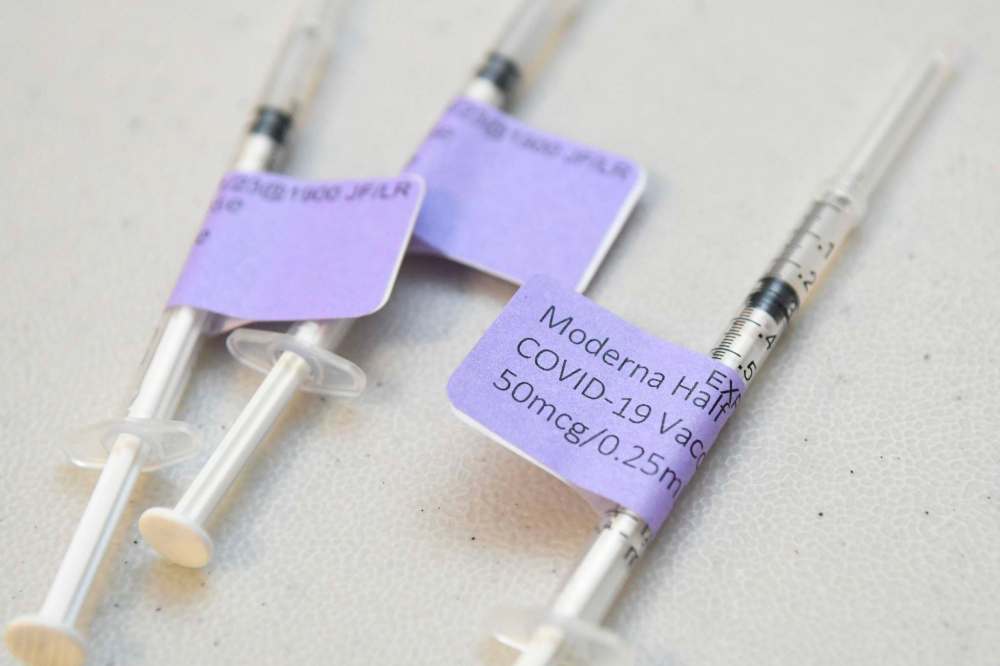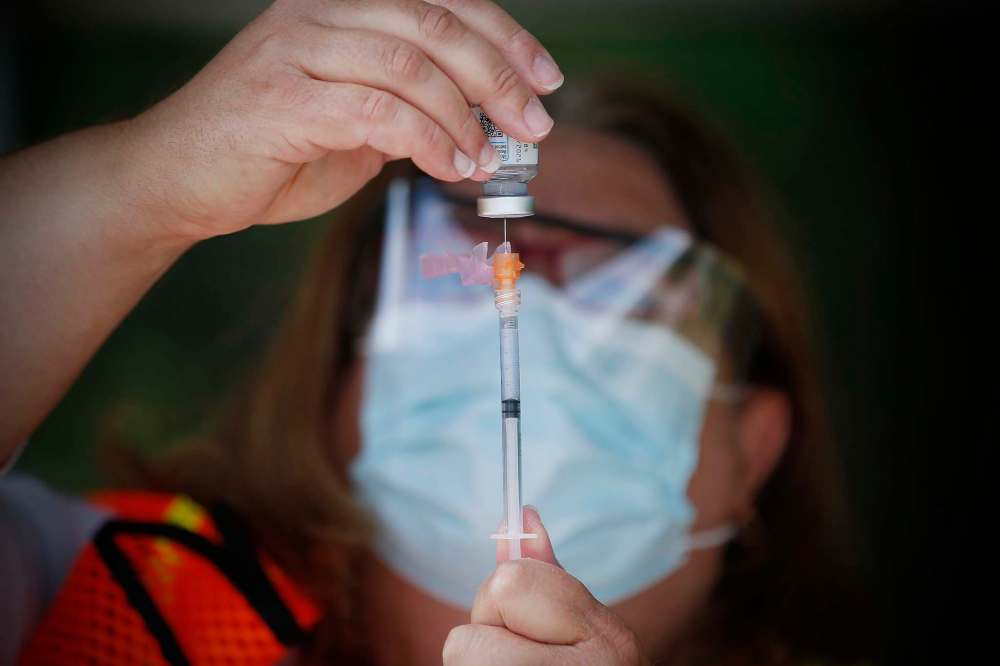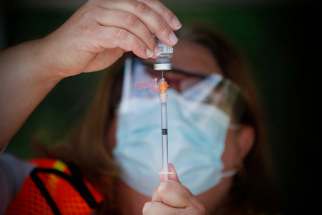Manitoba’s COVID-19 reporting gives ammunition to anti-vaxxers Daily numbers require context to underscore efficacy of vaccines
Read this article for free:
or
Already have an account? Log in here »
To continue reading, please subscribe:
Monthly Digital Subscription
$0 for the first 4 weeks*
- Enjoy unlimited reading on winnipegfreepress.com
- Read the E-Edition, our digital replica newspaper
- Access News Break, our award-winning app
- Play interactive puzzles
*No charge for 4 weeks then price increases to the regular rate of $19.00 plus GST every four weeks. Offer available to new and qualified returning subscribers only. Cancel any time.
Monthly Digital Subscription
$4.75/week*
- Enjoy unlimited reading on winnipegfreepress.com
- Read the E-Edition, our digital replica newspaper
- Access News Break, our award-winning app
- Play interactive puzzles
*Billed as $19 plus GST every four weeks. Cancel any time.
To continue reading, please subscribe:
Add Free Press access to your Brandon Sun subscription for only an additional
$1 for the first 4 weeks*
*Your next subscription payment will increase by $1.00 and you will be charged $16.99 plus GST for four weeks. After four weeks, your payment will increase to $23.99 plus GST every four weeks.
Read unlimited articles for free today:
or
Already have an account? Log in here »
Hey there, time traveller!
This article was published 25/11/2021 (1483 days ago), so information in it may no longer be current.
If the province wants to show how effective COVID-19 vaccines are at reducing infections and hospitalizations, it should clarify the data it gives to the public. What it releases now in the regular infection and hospitalization reports is misleading.
It isn’t deliberate. Public health officials just don’t present the data properly.
When the province reports the number of new COVID-19 infections and hospitalizations, it divides them into vaccinated, unvaccinated and partially vaccinated. Most days, about 30 to 40 per cent of new infections or hospitalizations are among the fully vaccinated. Some days it’s close to 50/50. To the casual observer, it looks like vaccines don’t help much.

What’s the point of getting immunized if such a large number of vaccinated people get infected and end up in hospital?
The answer is that the proportion of fully vaccinated people who test positive, or require a hospital bed, is substantially lower than those who are not immunized.
For example, if the province reports 100 new infections and breaks it down between 60 unvaccinated and 40 vaccinated, it doesn’t appear there’s a big difference between the two. But when the proportion of those who are immunized and non-immunized is reported, a far more accurate picture emerges.
The 40 fully vaccinated people infected represent about four per 100,000 immunized people (there are 1.02 million fully vaccinated Manitobans). The 60 people who were not immunized represent about 17 per 100,000 unvaccinated people (approximately 360,000 Manitobans are not fully vaccinated) — just over four times higher than those with a double dose.
It’s the same with hospitalizations. The province provides daily updates on the percentage of vaccinated and unvaccinated people who end up in hospital, including in intensive care wards. On Thursday, public health reported that 51 per cent of active hospitalizations were among the unvaccinated, three per cent were partially immunized and 45 per cent fully vaccinated. From those statistics, it doesn’t appear vaccines provide much protection.

But as a percentage of those immunized, they do.
The 39 fully vaccinated hospital cases represent four per 100,000 fully vaccinated people. The 44 who were not immunized represent 12 per 100,000 unvaccinated people, three times the rate of those who were fully vaxxed.
Public health officials have tried to explain that in their news conferences and media briefings, but they still report the misleading data on the online dashboard.
Government agencies and private-sector organizations regularly use per capita data to more accurately present statistics. Failure to do so can distort the data. When reporting crime statistics, for example, showing the raw number of homicides or assaults wouldn’t provide an accurate comparison between cities. Only when the numbers are reported on a per capita basis can criminologists accurately compare offences between jurisdictions.
Public health officials should provide COVID-19 infection and hospitalization data in a similar way.
It wouldn’t take much. They could include the number of new infections as a proportion of vaccinated and unvaccinated people on their online dashboard.

Instead of only reporting the 115 unvaccinated and 64 vaccinated COVID-19 cases Thursday, public health officials could have added that 32 per 100,000 were unvaccinated and six per 100,000 were fully vaccinated.
It would give the public a far more accurate picture of the effectiveness of vaccines.
That’s critically important in the fight against vaccine misinformation. The anti-vax movement uses the government’s misleading data to advance their cause. They claim it’s proof that vaccines don’t work. To the vaccine hesitant, including parents who may be reluctant to immunize their young children now that vaccines have been approved for kids aged 5 to 11, that’s powerful rhetoric.
Our government needs to do everything possible to counter that with clear, accurate data.
tom.brodbeck@freepress.mb.ca

Tom has been covering Manitoba politics since the early 1990s and joined the Winnipeg Free Press news team in 2019.
Our newsroom depends on a growing audience of readers to power our journalism. If you are not a paid reader, please consider becoming a subscriber.
Our newsroom depends on its audience of readers to power our journalism. Thank you for your support.








